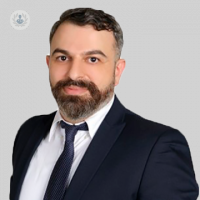Radiofrequency treatment for the face: how it works
Autore:Non-surgical facial rejuvenation is becoming increasingly popular, with radiofrequency treatment being one of the many new treatment options on offer. But does it really work, and are there any disadvantages? In this article we interviewed leading plastic surgeon Mr Nizar Hamadeh to find out what radiofrequency can be used for and who is most suitable.

What is radiofrequency treatment and what does it do to the skin?
Radiofrequency treatment works by stimulating subdermal collagen production and improves the quality of your skin. It is sometimes known as ThermaLift.
Radiofrequency treatment can be used in a number of situations:
- When you have mild skin laxity, radiofrequency treatment can help improve wrinkles.
- It can help in the treatment of acne by reducing the pores and killing the bacteria causing acne.
- It can be used on the scalp and may improve the quality of hair follicles.
- It can improve scars.
- It can be used in chronic pain treatment after surgery.
- It may even improve cellulitis in some patients, but the effect can be limited.
In general, you will need between six and ten sessions, and it might take up to 4-6 months before you start to see the results. The effects of treatment may last up to 12-18 months.
What are the possible disadvantages of radiofrequency treatment?
Disadvantages include the following:
- In certain cases it may cause fat necroses (death of fat cells underneath the skin) and this can have an adverse effect on rejuvenation.
- It may cause atrophic scars that might be difficult to treat.
- Treatment could be very painful – but most of the time it is ok.
Some studies have reported that RF could have link with cancer, but this still needs further studies and research to be conducted.
What are the limits of radiofrequency treatment?
Radiofrequency treatment is best done in your 30s and 40s when you have a minimal amount of excess skin. In some cases where a patient has a lot of excess skin (for example if you are in your 50s and 60s) then you have a high chance that this treatment will not work on its own.
For patients with excess or sagging skin, the best treatment remains a face and neck lift. Some patient can even benefit from a combination of both surgical and non-surgical treatments, such as fillers, Botox, radiofrequency or laser treatment. The surgery will get rid of excess skin, and lift the face, then non-surgical treatment can be used to improve the quality of the remaining skin. In many cases, you will get the best result from this combination approach.
If you would like to discuss your options when it comes to facial rejuvenation, book a consultation with Mr Hamadeh today.


